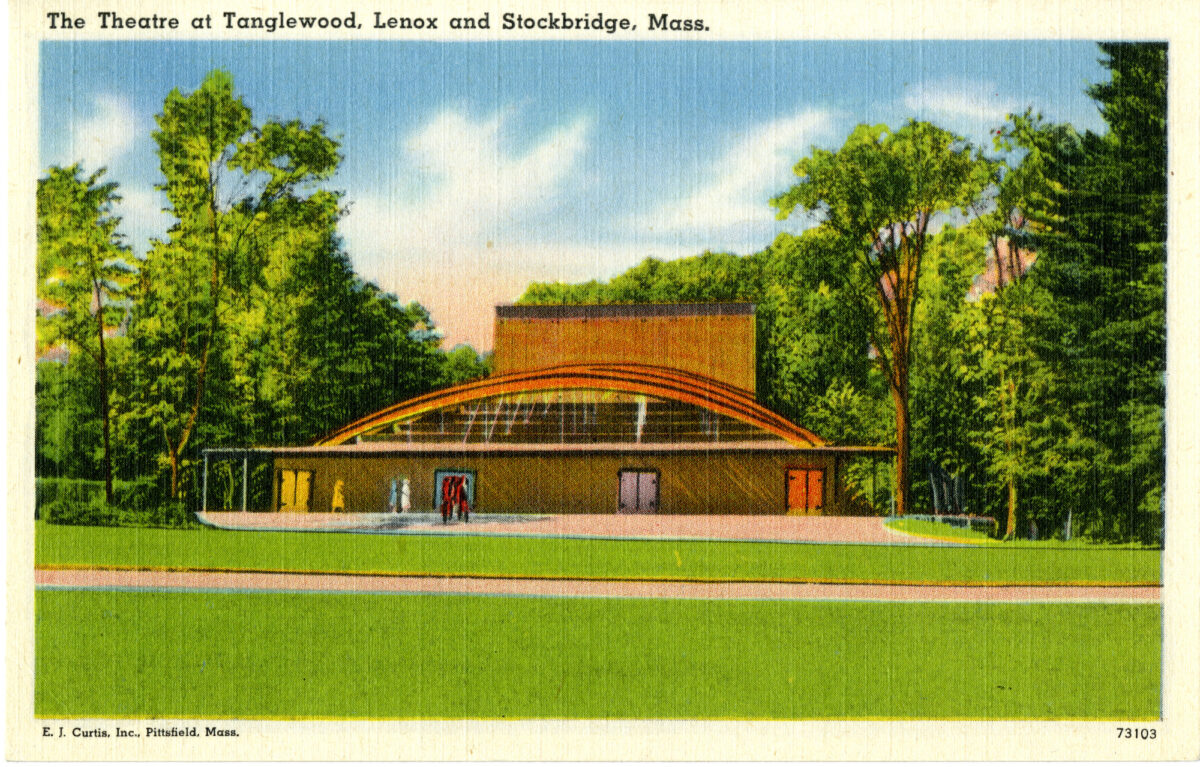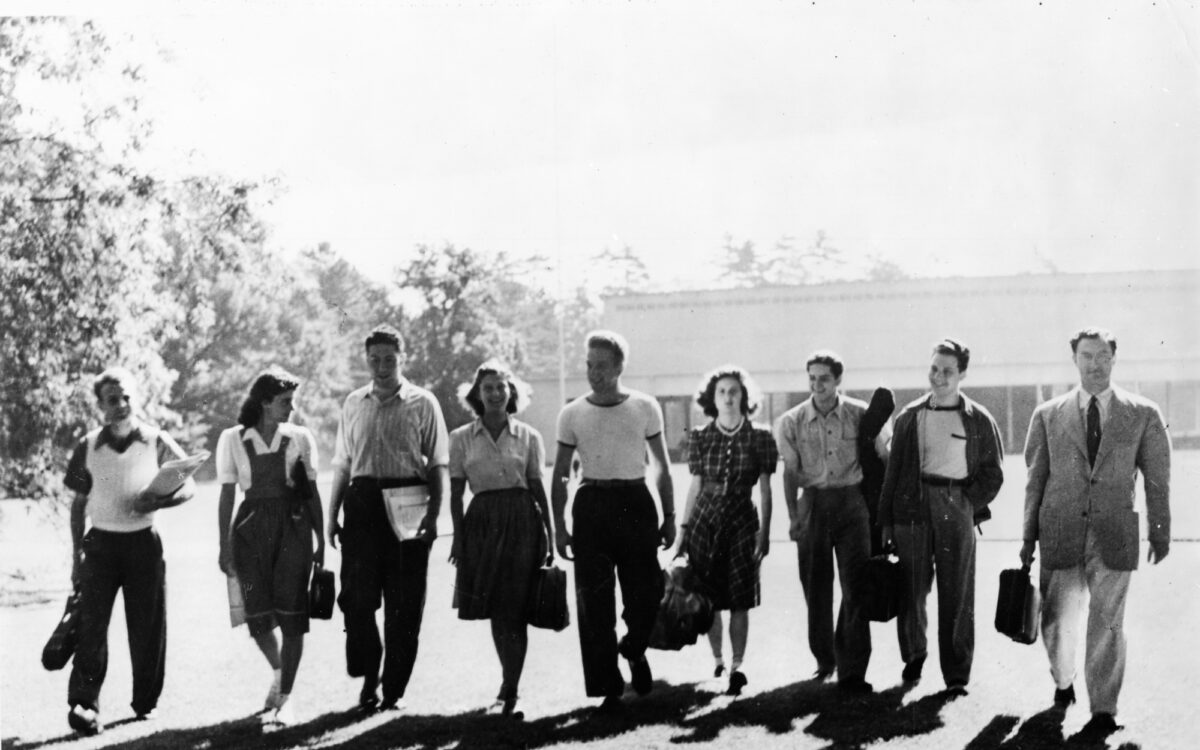Koussevitzky as Educator: Establishing the Tanglewood Music Center
BSO Music Director Serge Koussevitzky had long dreamed of establishing a music school. The donation of the Tanglewood estate to the BSO in 1937 paved the way for the creation of an “academy for living and working in music," meant to supplement a conservatory education with the experience of working musicians.
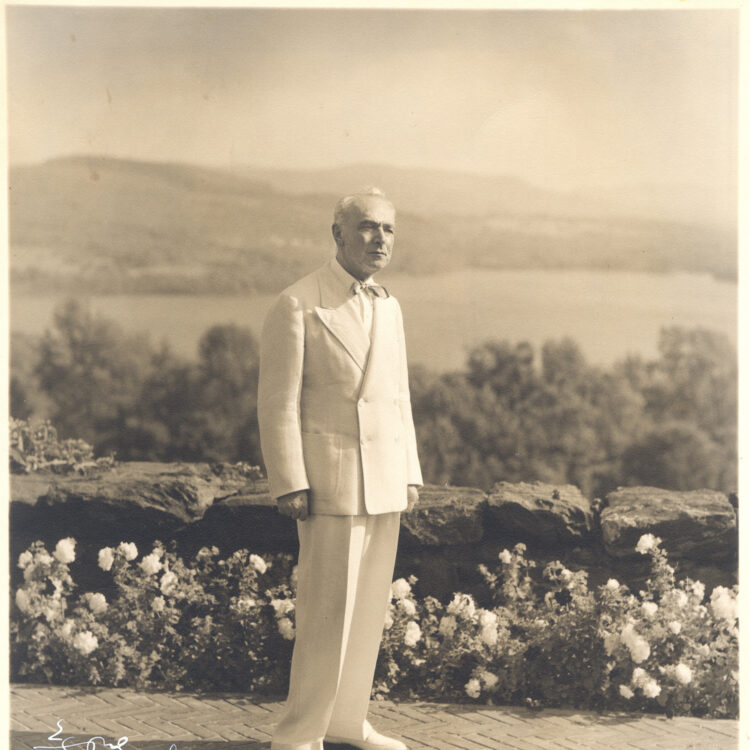
Serge Koussevitzky at his summer home, Seranak, near the Tanglewood grounds.
Photograph by Egone

The First Class: 1940
Tanglewood Music Center 1940 Class Photo
The 1940 class picture shows Tanglewood Music Center faculty, students, and staff assembled in front of the “Main House” that served for 54 years as the headquarters for TMC activities. The faculty chosen by Koussevitzky included Aaron Copland, Paul Hindemith, G. Wallace Woodworth, Olin Downes, Richard Burgin, as well as BSO members. Koussevitzky taught the most gifted conducting students, including Leonard Bernstein, Thor Johnson, Richard Bales, and Lukas Foss.
Photograph by E. J. Curtis.
Close up of 1940 class photo with a few known faces circled and identified.
Photograph by E. J. Curtis
A group of Tanglewood Music Center students walk across the Tanglewood lawn, 1940. Photographer unknown.
A Musical Tradition: Thompson's Alleluia
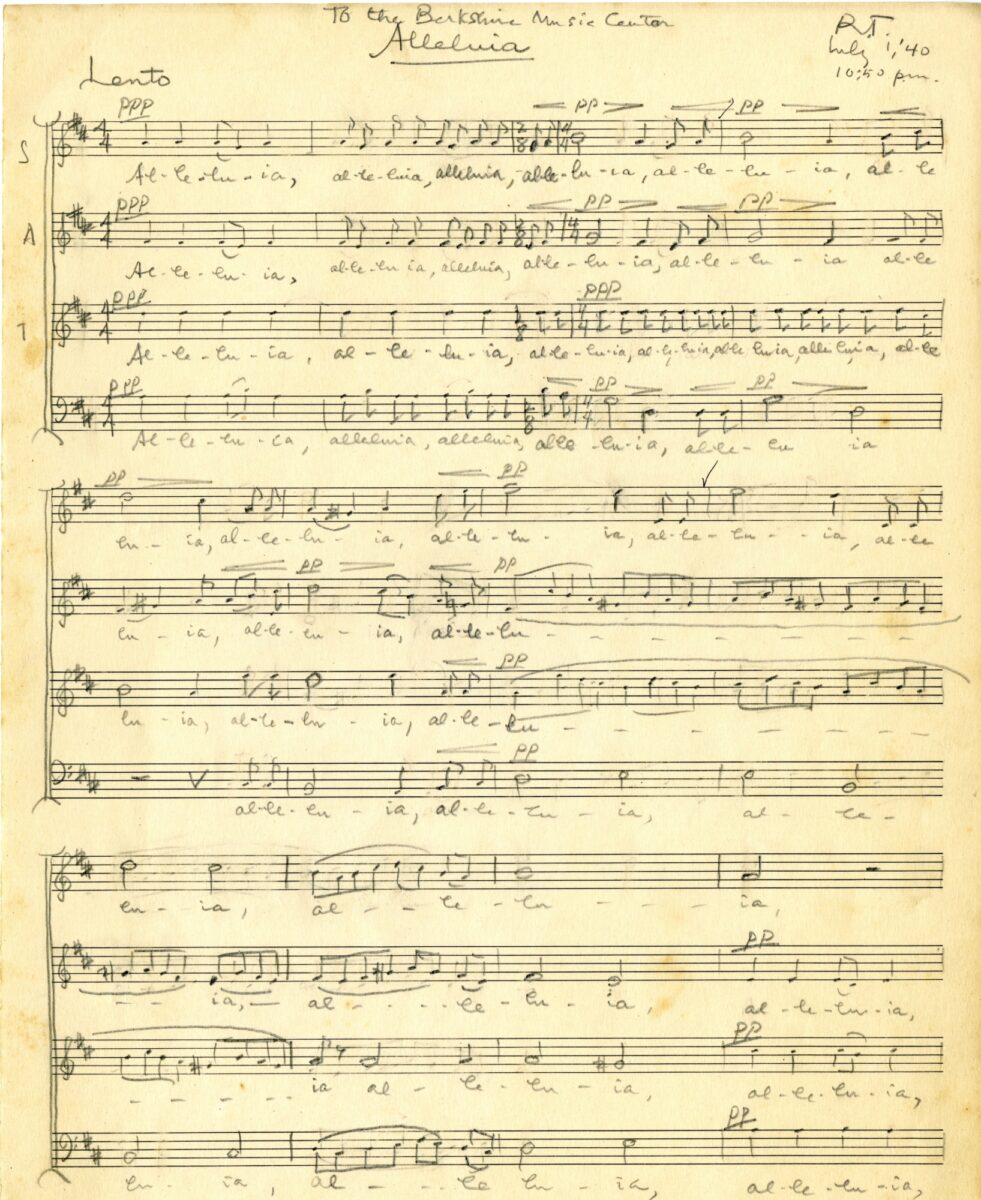
Listen: 1940 Performance of Randall Thompson's Alleluia - Excerpt
When a Dream Comes True
In his speech to the first class of student musicians, Koussevitzky describes how his dream became reality. Because English was not his first language, Koussevitzky carefully marked in stress and punctuation indications on his copy of the speech.

Photocopy courtesy of the Library of Congress
Listen: Koussevitzky Opening Exercises Speech 1940 - Excerpt
Bernstein and Koussevitzky
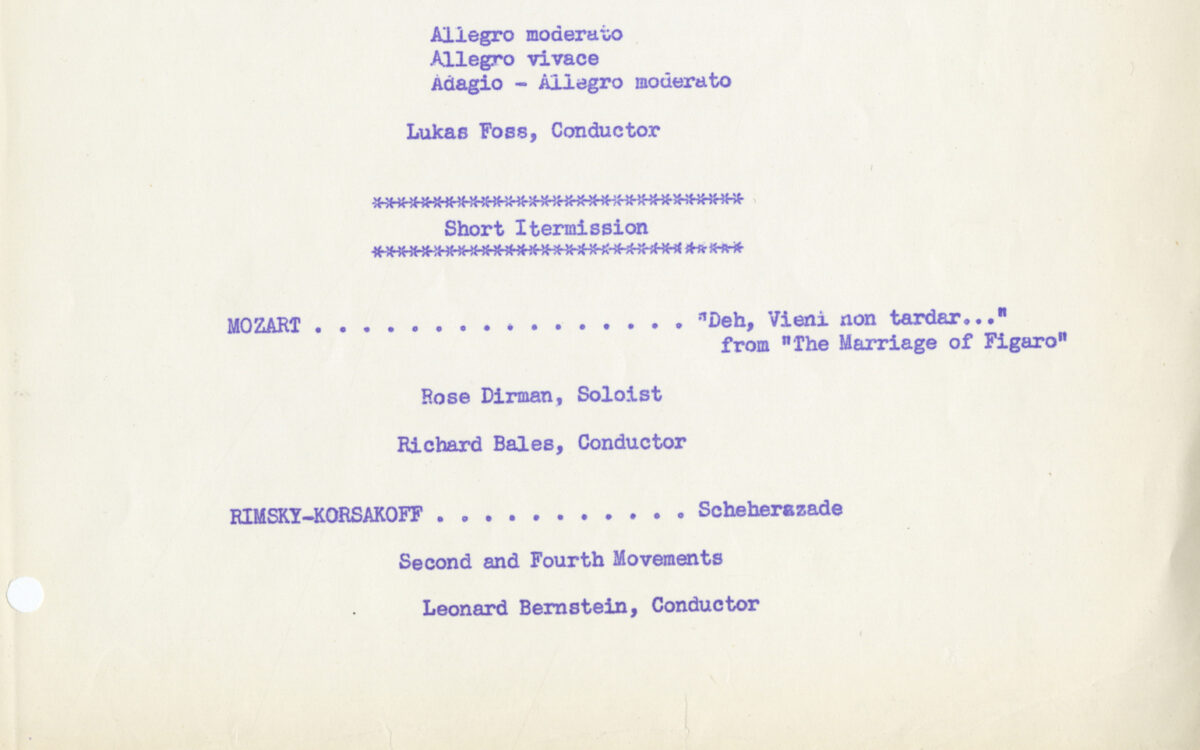
Program featuring Leonard Bernstein conducting excerpts from Rimsky-Korsakov's Scheherazade on July 26, 1940
The opportunity for students to conduct alongside Koussevitzky was an experience not offered through traditional academia. In a letter to Koussevitzky dated September 1940, Bernstein describes exuberantly the impact of his experience as a student at Tanglewood: “It was a renaissance for me, a rehabilitation of the twisted and undefined Weltanschauung [worldview] with which I came to you. For your creative energy, your instinct for truth, your incredible incorporation of teacher and artist, I give humble thanks. Seeing in you my own concepts matured is a challenge to me which I hope to fulfill in your great spirit!”
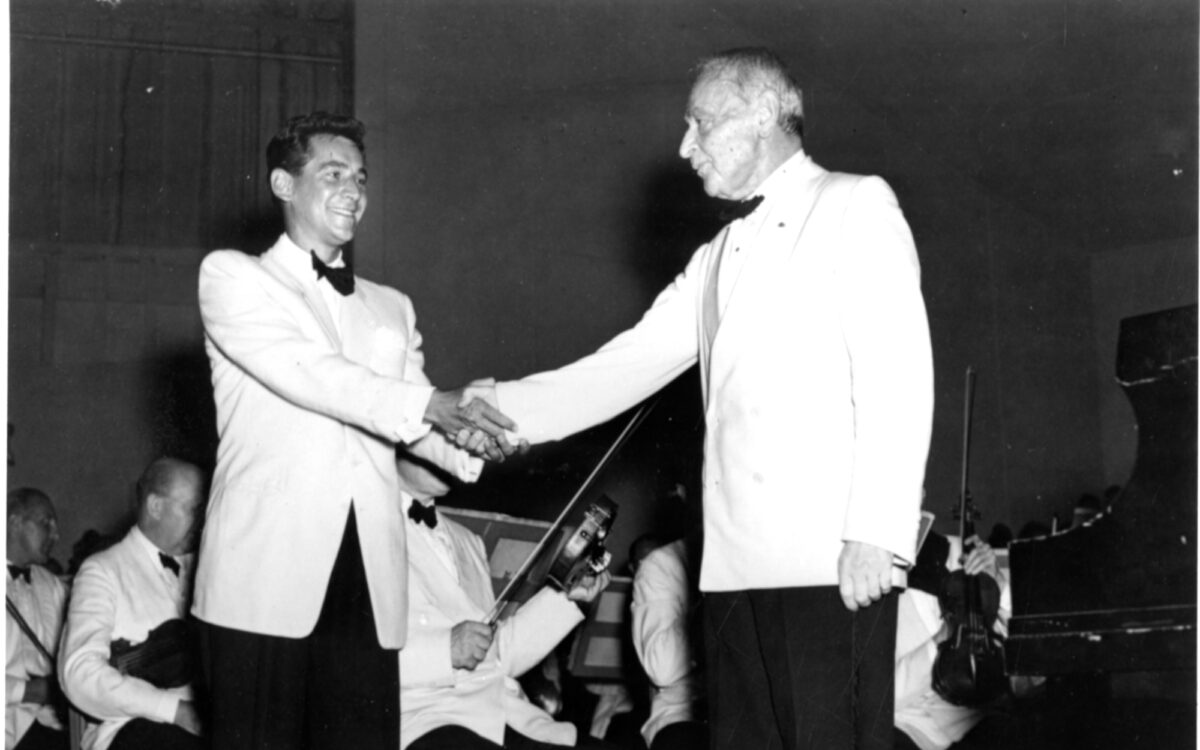
Leonard Bernstein shakes hands with Serge Koussevitzky after a performance at Tanglewood
A member of the first conducting class at the Tanglewood Music Center, Leonard Bernstein grew to regard Koussevitzky as a great mentor and inspiration. Koussevitzky would in turn support Bernstein, writing letters of recommendation, and premiering the conductor-composer-performer's second symphony, entitled “The Age of Anxiety”, with Bernstein at the piano.
Photograph by Howard S. Babbitt, Jr.
Excerpt of TMC student Leonard Bernstein conducting Rimsky-Korsakov's Scheherazade in 1940
Listen: 1940-07-26 Bernstein conducts the TMCO in Rimsky-Korsakov's Scheherazade - excerpt
Tanglewood on Parade: Raising Funds for the War Effort
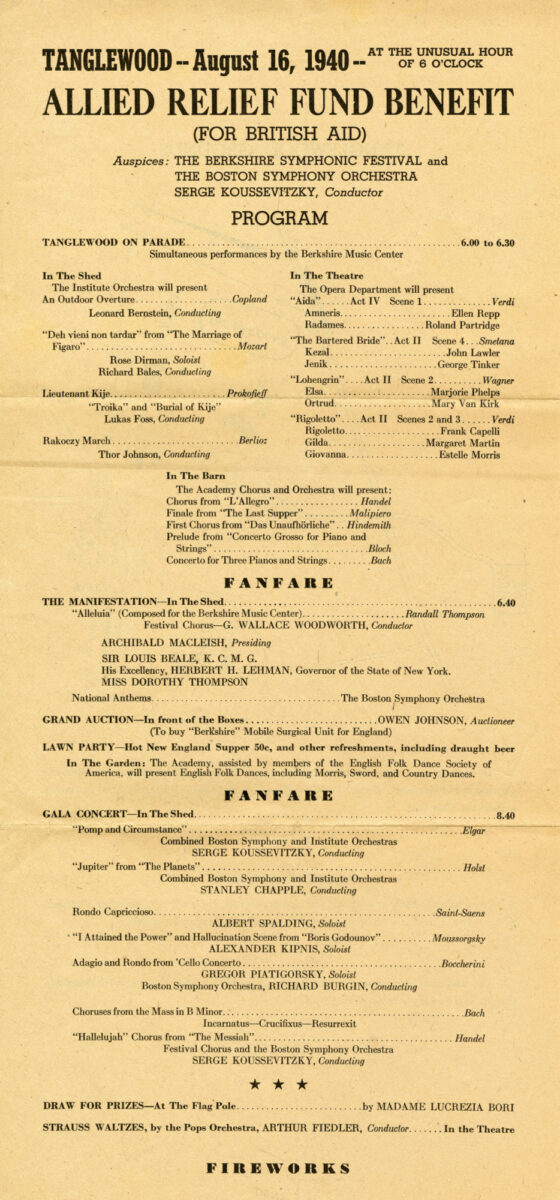
A Theatre-Concert Hall
